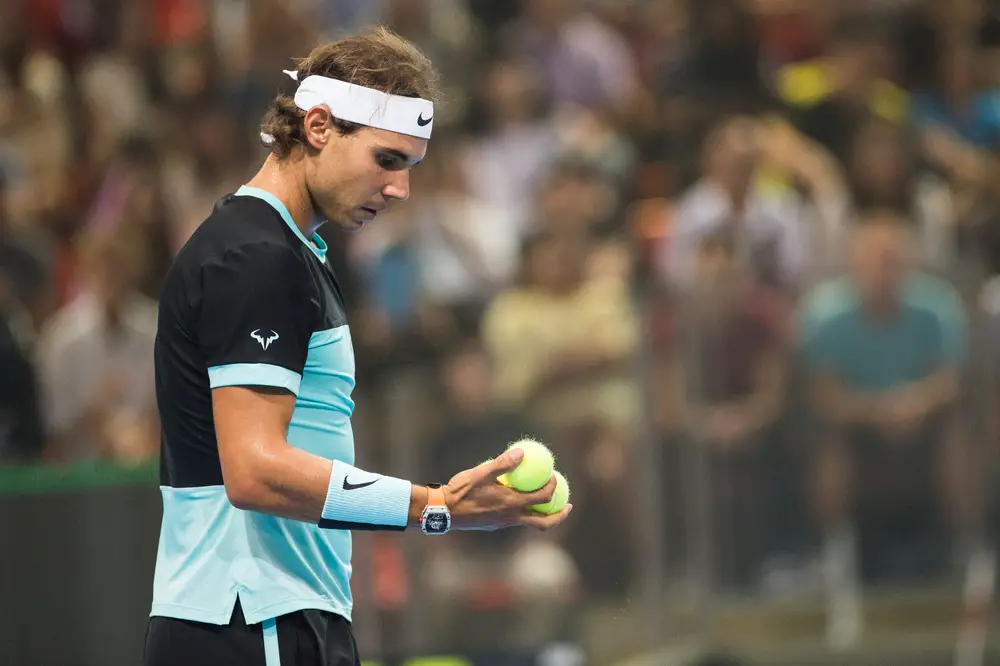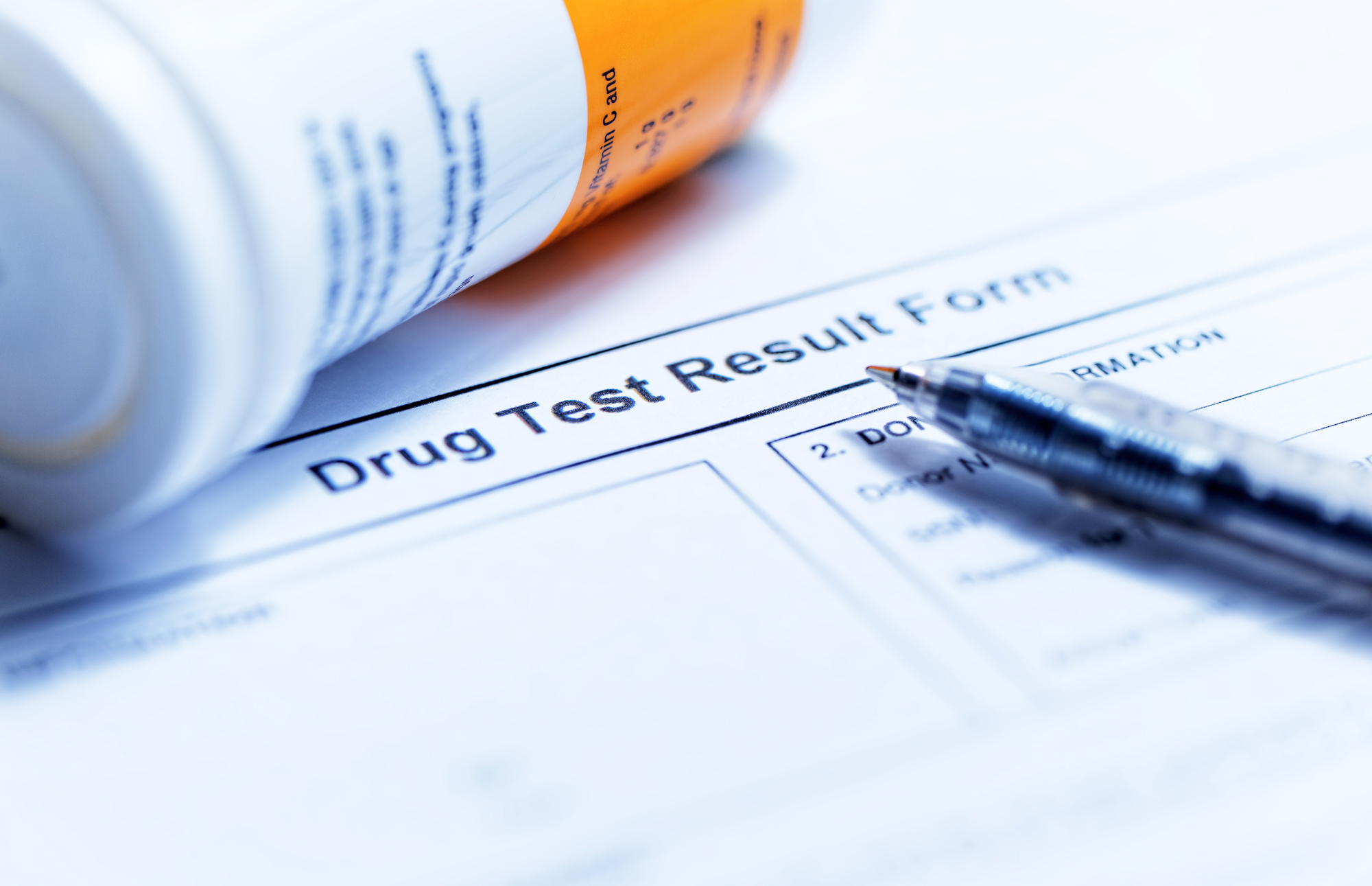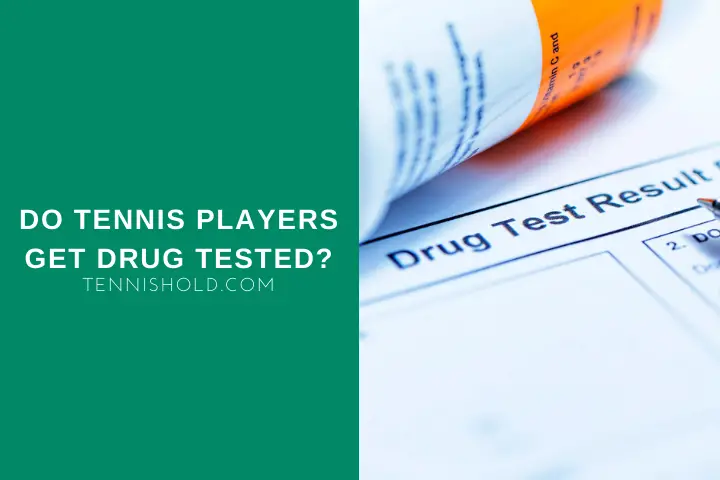Doping scandals in sports are as commonplace as sex scandals in politics. Athletes like the cyclist Lance Armstrong have seen their reputations shattered by drug scandals.
Drug testing is common practice in just about every sport today. Players are often subject to drug tests before or after their competition.
In some cases, they will be tested out of season too.
Professional tennis players are regularly drug tested, especially at the sport’s top level. The frequency of testing varies based on where the player competes and trains. Drug testing is less common at lower-level professional tournaments.
In this article I will be discussing:
- Whether tennis players are tested at events
- If players are drug tested at Wimbledon
- If players are randomly tested when out of season
- The drug testing policies for tennis
- The players drug tested the most
Maria Sharapova’s positive drug test is the most renowned in recent years.
She is not the first player to fail a drugs test and won’t be the last. If you want to learn more about drug testing in tennis, read on!
Are Tennis Players Tested At Tournaments?

In addition to being tested before and after tournaments, players can be subjected to drug tests during a tournament.
The Tennis Anti-Doping Programme (TADP) has three testing methods divided into two categories.
The TADP rules must be followed by all players who have an ATP or WTA rank. If a player does not have an ATP/WTA rank, they must also follow these rules if they compete in a tournament organized/sanctioned by the ATP, WTA, or ITF.
The testing methods used by the TADP are:
- Urine
- Blood
- ABP
ABP stands for Athlete Biological Passport. ABP is a tool used to detect biological variables over some time.
Instead of trying to confirm whether the substance is within the player’s system, ABP works differently.
ABP is designed to reveal if the player’s body benefits from the effects of a banned substance.
If an ABP test shows that an athlete appears to be benefiting from the effects of a banned substance, this can lead to targeted testing.
Of the 955 in-competition drug tests taken between April and June 2021, 555 were conducted on men and 400 on women. All 955 tests used were urine tests.
Urine tests for athletes work exactly the same way as the tests you would take at the doctor’s. Athletes urinate in a test tube, hand it to the anti-doping official, who then sends it off for testing in a lab.
There is one major difference between testing for medical reasons and anti-doping purposes.
When taking a urine test for anti-doping purposes, athletes will not do it in a standard toilet of their choice.
Athletes will take the test in a designated zone. It is done, for this reason, to ensure that the urine being tested has come from the athlete.
If it was in a toilet at home or in public, they could get someone else to take the test for them.
The two categories of drug testing are:
- In-competition
- Out-of-competition
In-competition testing is conducted at the site of a tournament. Tests are conducted on players normally at random between their matches.
A test may not be random if a player has returned a suspicious ABP test.
Between April and June, 2021 testing was conducted at 32 events in 16 different countries.
Also read: Do Tennis Players Drink Alcohol?
Are Tennis Players Tested At Wimbledon?

Wimbledon is the most famous and prestigious tournament in the world.
As one of the Grand Slams, they enjoy special privileges such as picking the scoring system.
They do not have any special rights when it comes to drug testing. This means that players are subject to the same drug testing rules here as at any other event.
Three authorities have the right to conduct drug tests. The World Anti-Doping Agency, the ITF, and the national anti-doping authority.
In this case it is UK Anti-Doping as Wimbledon is located within the UK. It is thus under the jurisdiction of UK Anti-Doping.
Are Pro Players Randomly Tested Off Season?

Professional tennis players can be subject to off-season tests as well.
Off-season tests are also classified as out-of-competition tests.
If you test positive for a substance while out of season, the punishment (if any) will be decided on two factors.
The first factor is the time since your last event. Suppose it is determined that the substance you tested positive for could have been in your system during competition. In that case, further action will likely be taken.
The next factor is how long until your next event.
If you test positive and you are due to compete next week, it implies that the substance has been taken in preparation for that event.
From April-June 2021, 638 out-of-competition tests were conducted. 332 men and 306 women were tested.
Of these tests, 217 were urine, 205 blood, and 216 ABP.
Off-season testing depends on where you are a resident and the national anti-doping agency.
Roger Federer said he recalls being tested only once in the 15 years he has lived in Dubai.
This does not necessarily mean that the anti-doping authorities of the UAE are less rigorous than other nations.
It could just be coincidence as most drug tests are random.
What Are The Tennis Drug Testing Policies?

As mentioned earlier, three different organizations have the right to conduct drug tests on tennis players.
The ITF, WADA, and the national anti-doping agency. Each country has a national anti-doping agency that operates under the umbrella of WADA.
When players are tested in competition, they are given a 60-minute time slot to show up to take a test.
Failure to turn up to a drug test without a valid reason can result in penalties such as fines and tournament disqualification.
Between April and June 2021, there were 21 missed tests.
The drug testing policies have come under fire in recent years.
The testing is almost always random. However, some players do appear to be subject to more tests than others.
Related: Can Tennis Players Smoke Weed?
What Is The Most Drug Tested Tennis Player?

The ITF doesn’t publish official statistics for how often players are tested. The United States Anti-Doping Agency does, however.
In 2019, the USADA conducted 55 tests on 32 players.
All of the 55 players were tested once or twice, except for two. John Isner and Steve Johnson were tested 3 times.
Reasons for this might be, for example, that Isner and Johnson competed in more US tournaments than others.
Thus, the USADA has the chance to test them more than others.
Roger Federer has personally commented on the discrepancies in testing frequency. He said that one month, in the run-up to Wimbledon, he was tested seven times.
Federer said that he thinks there is a variation in testing frequency based on where you spend your time.
Final Words
There is clearly a rigorous testing procedure in place for professional tennis. This applies both in and out of competition.
Whether the distribution of tests is fair enough is another question.
What do you think?
Should all players be subject to the same number of tests?
Perhaps you think the randomized system used today is fine.

